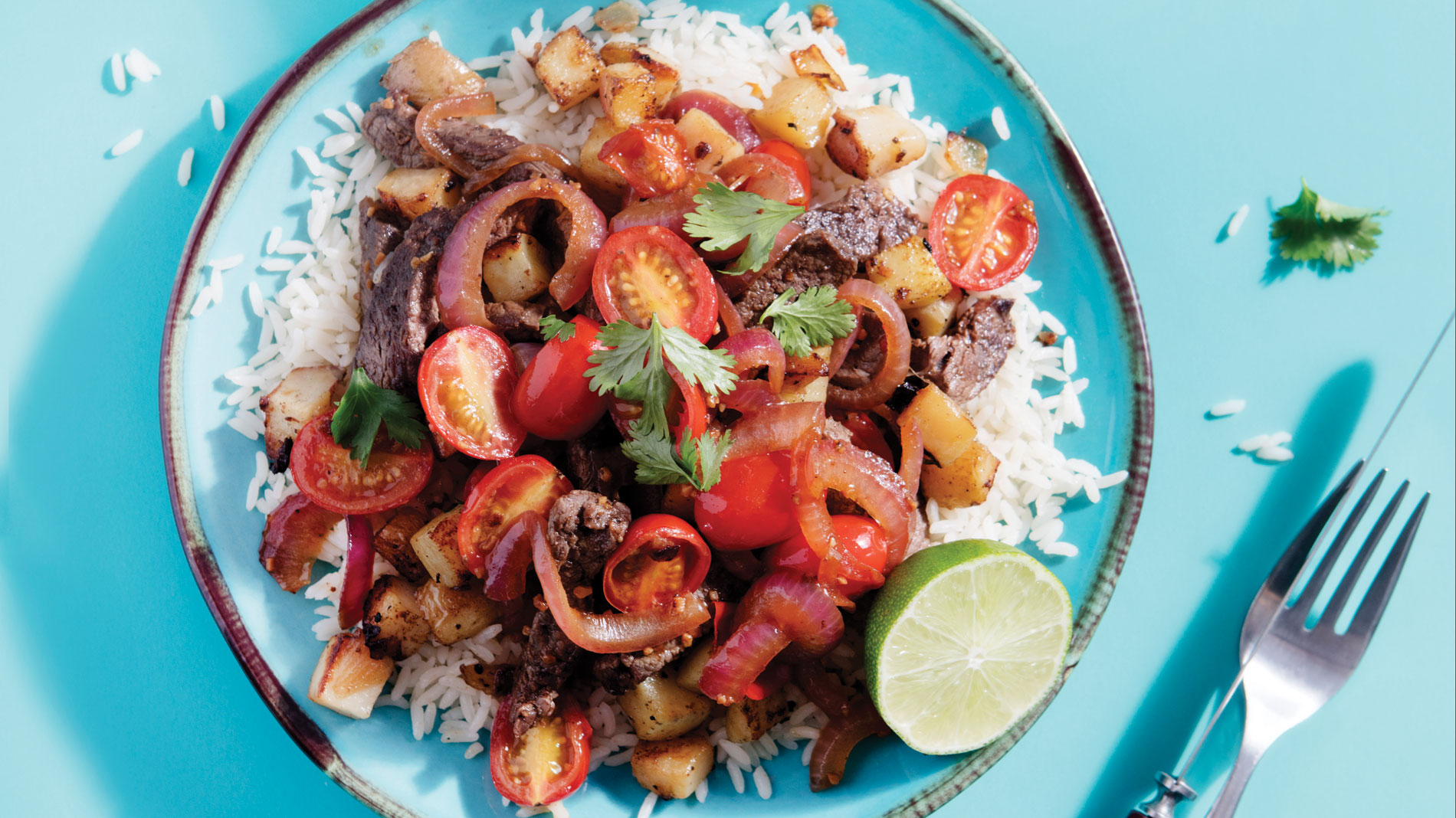4 classic Peruvian recipes for a taste of Lima
A trip to Global Foods Market in Kirkwood is all you need to bring a little Peru home with ingredients like giant corn and spicy-fruity ají chilies you need to recreate key basic dishes.
Aguaymento
A Peruvian groundcherry related to the tomatillo, an aguaymento looks like a small yellow tomato and has a sweet, mildly tart flavor. Sungold cherry tomatoes make a good substitute.
Ají Amarillo*
One of Peru’s cornerstone ingredients, ají amarillo is a bright orange, fruity and medium-spicy chili that lends a comforting warmth to sauces, stews and soups. Substitution is tricky, since you either have to sacrifice the ají amarillo’s fruity flavor or go with a pepper with far more heat. The best heat alternative is a serrano. For the closest flavor, go with a habanero or scotch bonnet.
Ají Limo*
Ají limo chilies are small and come in a variety of colors. The flavor is fruity and spicier than the ají amarillo. Ají limos are often used in ceviche and other fish dishes. Habaneros are a viable replacement in recipes.
Ají Rocoto*
Resembling a small bell pepper, rocotos pack a heavy heat punch. They are one of the oldest domesticated chili peppers. Try fresno chilies if you need a substitute.
Choclo*
Also known as Peruvian corn, choclo has large kernels with a starchier texture and less sweet flavor than the typical North American sweet corn. Conventional American corn has a different character, but will serve in recipes calling for choclo in a pinch.
Huacatay
Also known as Peruvian black mint, this herb is used to flavor a variety of dishes. A member of the marigold family, it has notes of mint, tarragon, basil and lime. Huacatay is often available in Latin grocery stores as a paste. A mixture of fresh mint and basil will serve if you can’t find huacatay.
*Available frozen, jarred or dried at Global Foods Market.

Recipes
Ceviche
Courtesy of La Mar’s Gastón Acurio
4 Servings
Peru’s national dish, ceviche is raw fish “cooked” in a sour, spicy marinade called leche de tigre. Red onions add pungency, while steamed corn and sweet potato add an addicting starchy counterpoint to the ultra fresh fish.
1 small sweet potato, peeled
1 ear choclo or corn
1 lb. fluke, flounder or sole, cut into ½-inch cubes
1 aji limo or aji amarillo, minced
Large handful fresh cilantro, chopped
2 cloves garlic, minced
Kosher salt, to taste
Juice of 4 lemons
1 cup leche de tigre (recipe follows)
1 red onion, thinly sliced
• Fit a steamer basket into a large pot. Add 1 inch water and bring to a boil. Add the sweet potato, then lower the heat to a simmer, cover and cook until tender, 20 to 30 minutes. Transfer to a plate to cool.
• If needed, add more water to the pot and return to a boil. Add the corn and steam until tender but still crisp, 2 to 3 minutes. Transfer to a plate to cool.
• Cut the potato into large chunks and the corn into quarters.
• In a large bowl, toss the fish with the aji, cilantro, garlic and salt. Add the leche de tigre.
• Stir the lemon juice into the ceviche along with about half the red onion. Taste, and adjust seasoning if necessary.
• Reserve enough of the remaining onion for garnish, then divide the rest among 4 bowls. Divide the ceviche evenly over the onion, then the sweet potato and corn. Garnish with the onion and cilantro. Serve immediately.
Leche de Tigre
Courtesy of La Mar’s Gastón Acurio
About 1 cup
Aside from its role in ceviche, leche de tigre is also enjoyed on its own as a shot, combined with pisco or sipped the morning after as a hangover cure.
2/3 cup fish stock
½ cup lime juice
1½ oz. white fish, cubed
½ red onion, chopped
2 Tbsp. chopped aji limo or aji amarillo
2 Tbsp. chopped celery
2 Tbsp. chopped cilantro
• Add all ingredients to a blender, and pulse a few times to combine.
• Strain the liquid through a fine-mesh sieve into a bowl, cover and chill.

Solterito de Quinoa
Courtesy of Mango Peruvian Cuisine
4 servings
Solterito is a traditional Peruvian salad. Tossed with quinoa, it makes a protein-rich, fresh and filling meal. “It’s gluten-free and vegetarian and can easily be vegan if you omit the queso fresco,” Calvo said.
1 cup cooked red quinoa 1 cup cooked white quinoa 4 oz. queso fresco, cubed 1 small red onion, finely diced 1 tomato, seeded and diced ¾ cup frozen fava beans, thawed ½ ear choclo, kernels removed 1 Tbsp. apple cider vinegar 1 Tbsp. finely chopped cilantro 1 Tbsp. finely chopped parsley 1 Tbsp. olive oil Kosher salt and freshly ground black pepper, to taste
• Toss together all ingredients in a large bowl. Serve warm, at room temperature or cold.
Lomo Saltado
Courtesy of Mango Peruvian Cuisine
2 servings
Lomo saltado is what Mango chef-owner Jorge Calvo calls “the staple dish of Peru.” A fusion of Chinese stir-fry and classic Peruvian ingredients, this dish is served everywhere from high-concept, trendy restaurants to stalls in local markets.
Olive oil, for frying
½ lb. russet potatoes cut into ½-inch cubes
Kosher salt and freshly ground black pepper, to taste
1 lb. beef tenderloin cut into ½-inch strips
6 Tbsp. vegetable oil
1 red onion, thinly sliced
6 cherry tomatoes, halved
2 cloves garlic, minced
2 tsp. aji amarillo paste
6 Tbsp. soy sauce
2 Tbsp. beef stock
2 Tbsp. red wine vinegar
White rice, to serve
Chopped fresh cilantro, for garnish
• Fill a large, deep skillet 1/8 inch high with oil and preheat over high heat. Add the potatoes and cook until tender and crispy, about 10 minutes. Drain on paper towels and season with salt and pepper.
• Season the steak with salt and pepper. Place a large wok or pan over high heat. When the pan is smoking, add the vegetable oil and sear the steak about 3 minutes, or until done to your liking. If the pan is crowded, brown in batches. Plate and set aside.
• Add the onion, tomatoes, garlic, aji paste and salt to taste to the pan. Cook about 2 minutes, stirring occasionally, then add the soy sauce, stock and red wine vinegar. Return the steak to the pan and toss. Remove from heat.
• Serve over the potatoes and white rice and garnish with chopped cilantro.
Stephanie Zeilenga is a critic and contributing writer for Sauce Magazine.
Tags : Recipes, Restaurants






